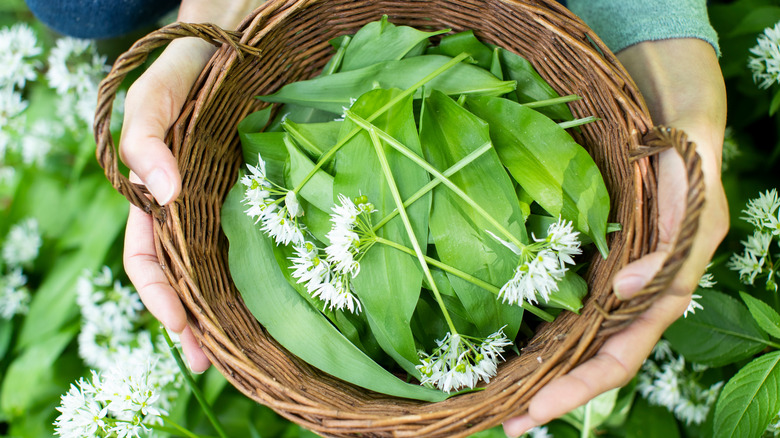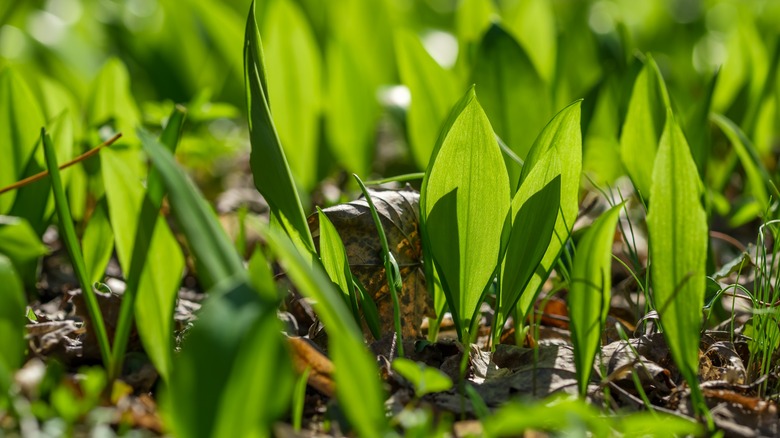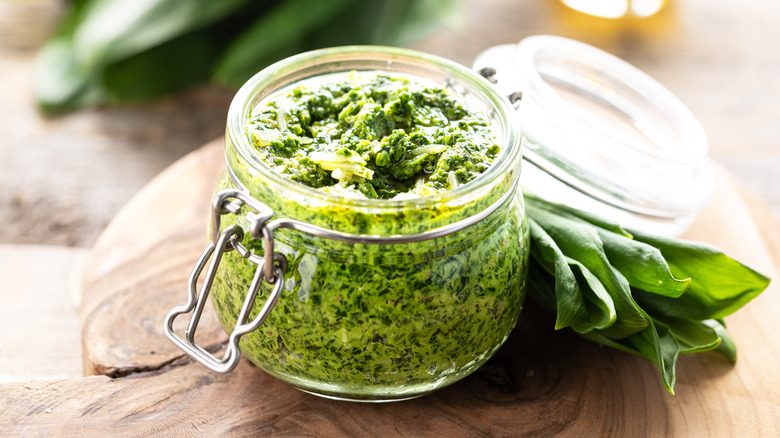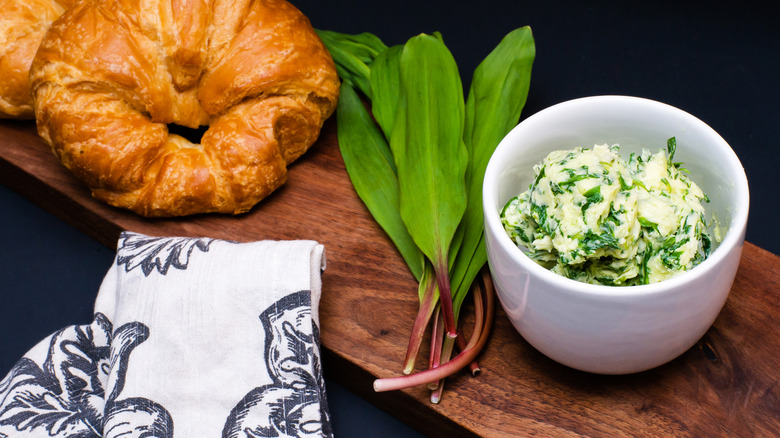The Vibrant Garlic Alternative With A Softer Flavor
There's no denying the powerful punch that garlic brings to a dish. That's why it is prized in cuisines the world over. Spanish sopa de ajo, Korean kimchi, Italian bagna cauda, French aioli, and Argentine chimichurri are all redolent of the bulb from the allium family. Garlic contains multitudes of flavor profiles that can be coaxed out by various cooking techniques and treatments, as well. There is, of course, the unmistakable hit of raw garlic in dishes like chimichurri and aioli, but also the sweet creaminess of roasted garlic that can be added to velvety mashed potatoes, and even the fermented earthiness of black garlic.
Garlic isn't a difficult ingredient to work with; peel it, slice it, crush it, chop it, saute it, and the flavor is easy to coax out and temper to your recipe's needs. But that is not to say there aren't helpful hints which can help even seasoned cooks stay on top of their garlic game. Did you know to keep cloves whole in dishes for a milder taste, or to let the bulbs rest between chopping and adding to dishes to allow for healthful enzymatic action?
All the same, there are times when garlic is too much for a dish, but its exclusion isn't the answer either. That's when those in the know turn to its allium family cousin with less of an edge.
What is wild garlic?
Wild garlic, Allium ursinum, has been used for culinary and medicinal purposes for centuries. A native of Europe and Asia, it has a milder, more delicate flavor than garlic. Those fond of Latin might have noticed ursinum — or 'bear' in Latin — in the scientific name, which is due to the purported fondness bears have for the plant. It is colloquially called bear garlic, ramsons, buckrams, devil's garlic, and stinking jenny.
A perennial, wild garlic grows in woodland areas and damp meadows, where it forms large carpets of lush green leaves. The leaves of wild garlic are long, slender, and pointed, and they have a pungent garlic smell. These sprouts are usually harvested in early spring, before the plant flowers, and can be used fresh in a variety of dishes, including salads, soups, and pesto.
In addition to its culinary uses, wild garlic — much like its common cousin — has been traditionally used for its medicinal properties. It is believed to have anti-inflammatory, antibacterial, and antiviral properties and has been used to treat various ailments, including respiratory infections, digestive problems, and high blood pressure.
Finding and cooking wild garlic
Let's say you have a garlic craving, but the dish you have in mind might be strong-armed by its assertive flavor. Or maybe, someone you're cooking for simply can't bear the unbridled headiness of garlic. That may mean you want to seek out wild garlic, but how?
As we're in a foraging renaissance, you may want to strap on your boots and head out to the country to pick your own. Just make sure you live in the right part of the world. Wild garlic is only found in European and Asian forests. If you're in a part of the world that isn't lucky enough to have wild garlic growing naturally, it is available online. As seeds, you can grow your own and have fresh wild garlic at the ready, but it can be had as dried and powdered leaves or even pickled in salt brine in jars.
If you do have fresh wild garlic Great Italian Chefs suggests starting with a simple saute or blanch, like spinach. You may want to add some spinach to cut the flavor. It is also a delightful addition to vegetable tarts and other mild flavors that love to be paired with garlic, such as chicken, asparagus, and lamb. Powdered wild garlic leaf can be used like granulated garlic, but note that it is milder, so more may be needed to convey the proper flavor, and, as it is made from the green leaf, it will tend to add a verdant tone.
Ramson vs. ramps
While Allium ursinum isn't native to the U.S., we do have another member of the allium family that is found wild across many parts of the nation, one that is equally prized for its mild garlic flavor.
Ramps and ramsons are often used interchangeably to describe wild garlic, but they actually refer to different species of Allium. Ramps, also known as wild leeks or Allium tricoccum, are a North American species of wild onion that grow in the eastern United States and Canada. Ramsons, or wild garlic, are, as covered, a European species of wild garlic.
While both ramps and wild garlic have a similar appearance and taste, they have some distinct differences. Ramps have flat, broad leaves and a bulbous white base, similar to a scallion, while wild garlic has narrow, pointed leaves that are more delicate and a bulb that is elongated and reddish-brown. Ramps tend to have a stronger onion flavor, while wild garlic has a milder garlic flavor.
Ramps are typically harvested in the spring and are a popular ingredient in many regional dishes. While you'd not be remiss in swapping out ramps for wild garlic in recipes that call for it, expect for it to pack even less of a garlic punch than its cousin. If you're looking for ramp-specific tips though, Bon Appétit has a roundup of some of their favorite recipes to help get you started with the wild leek.



